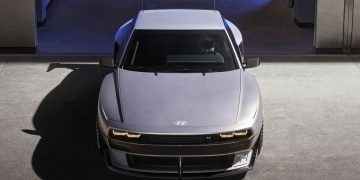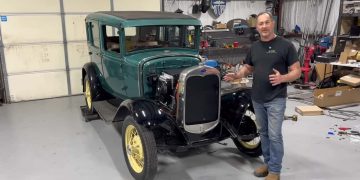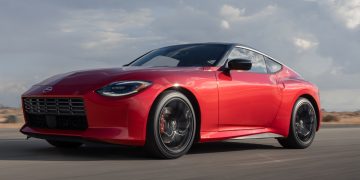Introduction: McLaren’s Influence Beyond Speed and Performance
When it comes to performance, innovation, and engineering excellence, few names resonate as strongly as McLaren. Known for its Formula 1 heritage, race-winning engineering, and cutting-edge automotive technologies, McLaren has risen from a small, ambitious racing team to one of the most respected manufacturers of supercars and hypercars in the world. The company’s brand is built on precision engineering, uncompromising performance, and a vision of what the future of motoring can look like.
However, McLaren is more than just a performance car manufacturer—it is a cultural force that has influenced not only the automotive industry but also the worlds of technology, design, and luxury. From its cars on the road to its achievements in motorsport, McLaren’s legacy is shaped by its unyielding commitment to innovation, its passion for driving dynamics, and its visionary approach to the future.
This article explores how McLaren has become a cultural icon and the tremendous influence it has had on both the automotive industry and popular culture.
1. The Origins of McLaren: From Formula 1 to Road Cars
Bruce McLaren’s Vision and the Birth of the Company
McLaren’s story began in 1963 when Bruce McLaren, a talented race car driver from New Zealand, founded McLaren Motor Racing. McLaren’s initial focus was on Formula 1, where the company made a significant mark by developing and engineering innovative race cars that often pushed the limits of technology and performance.
Bruce McLaren’s legacy as a pioneer in motorsport is foundational to the brand’s ethos. After his tragic death in 1970, McLaren’s influence continued to grow through Formula 1 successes, with the company winning multiple Constructors’ Championships and Drivers’ Championships over the decades. These accomplishments helped establish McLaren as a leader in precision engineering and high-performance vehicles.
Transition to Road Cars: McLaren’s Groundbreaking Road Cars
While McLaren’s heart was in motorsport, the company made its entry into road cars in 1992 with the release of the McLaren F1, a revolutionary hypercar that redefined the supercar world. This naturally aspirated V12-powered machine broke records, setting the standard for both speed and design. Its central driving position, lightweight carbon fiber structure, and advanced aerodynamics were years ahead of its time. The F1 became an iconic symbol of McLaren’s engineering prowess and began the company’s journey into road-going performance vehicles.
2. McLaren’s Engineering Philosophy: Performance Without Compromise
Innovation in Lightweight Engineering
At the core of McLaren’s automotive philosophy is lightweight construction. The brand’s commitment to using advanced materials like carbon fiber has allowed McLaren to create cars that are not only incredibly fast but also agile and nimble. The company’s use of the Monocage carbon-fiber monocoque chassis is a signature innovation, which reduces the car’s weight while increasing safety and structural rigidity.
McLaren’s lightweight engineering directly influences handling and performance. With less weight to carry, McLaren cars exhibit exceptional agility and cornering capabilities, whether on the racetrack or the road.
Aerodynamics as a Key to McLaren’s Performance
Aerodynamics has played a critical role in McLaren’s ability to create world-class supercars. Active aerodynamics, including adjustable rear spoilers, front flaps, and air vents, enable McLaren cars to automatically adjust their aerodynamics for optimum performance at various speeds. These innovations minimize drag while maximizing downforce, ensuring that the car remains stable at high speeds and during sharp corners.
The brand has also been a leader in underbody aerodynamics, ensuring that air flows efficiently beneath the car, reducing lift and improving grip.
The Hybrid Revolution: McLaren’s Vision for Sustainable Performance
In recent years, McLaren has embraced hybrid technology, particularly through models like the McLaren P1 and McLaren Artura. The McLaren P1, for example, introduced a combination of a V8 twin-turbo engine and an electric motor that boosted performance while reducing emissions.
The Artura represents McLaren’s commitment to the future, as the company’s first high-performance hybrid supercar that combines a 3.0-liter twin-turbo V6 engine with an electric motor, delivering an impressive 671 horsepower. This hybrid approach allows McLaren to retain its performance edge while reducing environmental impact.
3. McLaren’s Design Language: Function Meets Form
The Pursuit of Aerodynamic Beauty
McLaren’s design language is rooted in functionality, with a strong focus on aerodynamics and performance. The brand doesn’t just design for beauty—it designs for speed. McLaren’s designers work in close collaboration with engineers to ensure every curve and contour contributes to optimal performance. This form follows function philosophy is evident in every McLaren car, from the P1 to the 720S.
Active aerodynamic components, such as the dihedral doors on the McLaren 720S that open upwards to reduce drag, are a blend of art and engineering. The lightweight body panels, made from carbon fiber, contribute not only to aesthetics but also to the car’s overall rigidity and stability.
Inside McLaren Cars: Minimalism Meets Modern Luxury
While McLaren cars are all about performance, they don’t compromise when it comes to luxury and driver engagement. The cockpits of McLaren cars are focused on the driver, with seamless digital displays, ergonomically designed seats, and a clear, intuitive layout. The use of high-quality materials like leather and aluminum inside McLaren cars ensures a luxury experience without compromising on weight or performance.
The minimalistic design, without excess clutter, allows the driver to focus purely on the road or track ahead, offering a true sense of engagement.

4. McLaren’s Cultural Impact: Supercars and Beyond
McLaren in Popular Culture
McLaren cars have made a significant impact on popular culture. From appearances in blockbuster movies to racing video games, McLaren’s engineering innovations and superior performance have made the brand synonymous with cutting-edge technology and elite status.
In movies like the “Fast and Furious” franchise and documentaries like “McLaren”, the brand has captured the imagination of millions around the world. The McLaren F1, in particular, remains one of the most iconic cars in cinematic history.
Furthermore, McLaren cars are frequently featured in video games such as the Gran Turismo and Forza Motorsport series, which further ingrains the brand in the minds of both car enthusiasts and casual players alike.
McLaren and the Racing World: An Enduring Legacy in Formula 1
McLaren’s racing heritage extends beyond its Formula 1 roots to a wide array of other motorsports, including Le Mans and IndyCar. The brand’s Formula 1 team, known as McLaren Racing, has won multiple Constructors’ Championships and Drivers’ Championships, cementing McLaren’s reputation as one of the most successful teams in F1 history.
With legendary drivers like Ayrton Senna, Alain Prost, and Lewis Hamilton representing McLaren on the track, the team has been synonymous with precision engineering, cutting-edge technologies, and unmatched driver performance.
The direct link between McLaren’s motorsport success and its road cars has created a unique synergy, making McLaren’s cars feel not just like supercars, but also like pieces of engineering art born from the racetrack.
Collaborations and Sponsorships: McLaren’s Influence in Other Industries
Beyond motorsports, McLaren’s engineering prowess has made it an attractive partner for various industries. Collaborations with brands like Tag Heuer, Bose, and Richard Mille have helped McLaren establish itself as a luxury brand. Tag Heuer, in particular, created limited edition McLaren-themed watches, blending high-performance motorsport with luxury timepieces.
Additionally, McLaren’s design expertise has influenced aerospace and defense industries, where precision and performance are equally important. This cross-industry innovation has not only helped McLaren grow as a brand but also extended its cultural influence.
5. McLaren’s Impact on the Future of Automobiles
Electrification and Sustainable Supercars
As McLaren continues to evolve, it is embracing a future where sustainability and high performance go hand in hand. The introduction of hybrid models like the McLaren Artura signals the brand’s intention to lead in sustainable supercar technology.
McLaren’s focus on hybridization and electrification is part of a broader strategy to make high-performance supercars more environmentally friendly, without sacrificing the adrenaline-pumping performance the brand is known for.
The Road Ahead: McLaren’s Vision for the Future
Looking forward, McLaren has already set its sights on fully electric vehicles, with a commitment to produce a zero-emission supercar by the end of the decade. The brand’s focus will remain on engineering excellence, performance, and driver engagement, even as the industry shifts towards electric and autonomous vehicles.
McLaren’s future lies in a seamless blend of power, technology, and sustainability—with a focus on providing an exhilarating driving experience that is ecologically responsible.
Conclusion: McLaren’s Timeless Influence on the Automotive World
McLaren’s unique combination of motorsport success, engineering innovation, and cutting-edge design has made it one of the most influential automotive brands of the modern era. From its inception in Formula 1 to its latest hybrid supercars, McLaren continues to push the boundaries of what is possible in automotive performance.
Beyond the technical aspects of its cars, McLaren has become a cultural icon—a symbol of luxury, elite performance, and uncompromising quality. Its influence extends far beyond the racetrack, impacting industries ranging from fashion to video games and beyond.
As McLaren prepares for the future, its role in shaping the automotive industry and influencing popular culture will only continue to grow. For car enthusiasts, drivers, and fans alike, McLaren represents the pinnacle of what is possible in a world where technology, passion, and performance collide.


































Discussion about this post